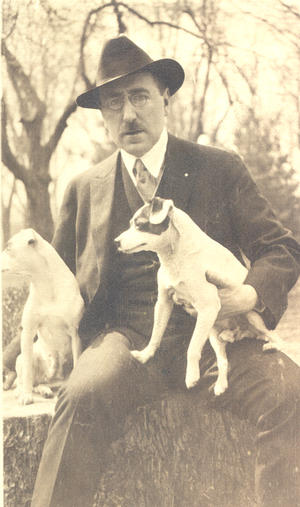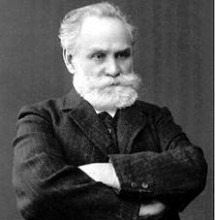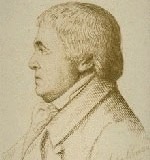The ‘Empirical’ and scientific validity/evidence for NLP could be seen to be held within the original authors who were modelled by Bandler and Grinder.

For instance, anchoring was born out of studies as far back as the 1800’s. Reflexes first came into the spotlight in the early 1800s, when research by Marshall Hall established that blinking, sneezing and vomiting were reflexes controlled by the human nervous system. Later, in 1875, two physicians, Heinrich Erb and Carl Friedrich Otto Westphal, published papers on the clinical utility of the muscle stretch reflex – specifically the patellar or “knee-jerk” reflex. And not forgetting Edwin Twitmire with the famous knee tapping experiments.
These papers sparked widespread research, and smooth muscle reflexes became a vital part of neurological exams. This was then extended to another physiological model by Ivan Pavlov. In the 1890s, Pavlov was investigating the gastric function of dogs, and later children, by externalizing a salivary gland so he could collect, measure, and analyze the saliva and what response it had to food under different conditions.

He noticed that the dogs tended to salivate before food was actually delivered to their mouths, and set out to investigate this “psychic secretion”, as he called it. In 1904 Pavlov was awarded the Nobel laureate “in recognition of his work on the physiology of digestion, through which knowledge on vital aspects of the subject has been transformed and enlarged”. He was the first person to obtain the Nobel Prize in Physiology and as a result, he was truly respected by the scientific community for his efforts.
This was what has become the notion of anchoring in NLP. The ’empirical’ value being the research and development of over 100 years of proven technique. So NLP, in essence, could be seen as not ‘the new kid on the block’ but merely the new application of all the best practises already in existence.
The representational system is one of the corner stones of all NLP practise: Is it real? Representational systems can be found in the glossary section.
Empathy revisited: the effects of representational system matching on certain counseling process and outcome variables
Author: Brockman, William P.
Year of publication: 1980
Publishing house / periodical / university: Dissertation Abstracts International 41(8), 3421-A College of William and Mary, 167 pp. Order = 8103591
Therapist-offered empathy has been shown to be an important ingredient in the counseling relationship. Many operational definitions of empathy and tools for measurement of this elusive quality exist. Most empathy measures have been criticized on methodological grounds and their construct validity is suspect.
Yet there is little argument with the trend which emerges from the data; the overall relationship between empathy, or those dimensions tapped by empathy measures and effective therapy appears positive. The nature of empathy, however, remains enigmatic and it is evident that all the variables which account for the empathetic process have not been explicated. This study defined and investigated the validity and effect on counseling of a new dimension of empathy.
From their linguistic analysis of effective therapy, Bandler and Grinder have formulated the construct of representational systems or internal maps used by individuals to organize reality. Such maps are visual, auditory or kinesthetic, and are reflected in natural language. Do you see what I mean?
Empathy, then, is operationally defined as the counselor’s matching language with the representational system used by the client. It was hypothesized that counselors who use representational system matching would: (1) be perceived by subjects as more empathetic than counselors who do not (accepted, p
Subjects (N=20) were undergraduates at The College of William and Mary who met with each of two counselors, in counterbalanced order, for an analogue of a beginning counseling interview. One counselor used representational system matching; the other counselor took a more generic, human relations approach to empathy. After each interview subjects completed Barrett-Lennard’s Relationship Inventory (RI) and Jourard’s Willingness-to-Disclose Questionnaire (WDQ).
Following their second interview subjects indicated their preferred counselor. Covariates were: (1) Carkhuff’s Empathetic Understanding Scale (EU) which also served as a dependent measure; (2) the Counseling Readiness Scale (CRS) of Gough and Heilbrun’s Adjective Check List; and, (3) Rotter’s I-E scale. The Latin square design produced data analyzed by: repeated measures analysis of covariance (hypotheses 1-3); stepwise regression (hypotheses 1 & 2), and Chi Square (hypothesis 4).
Results indicate that both subjects and judges perceived the representational system matching counselor as more empathetic than the generic empathy counselor. While EU accounted for 11.76% of the variance on RI-empathy scale scores, representational system matching accounted for 11.94% of the variance beyond that accounted for by EU. Clients preferred the representational system matching counselor by a ratio of 3 to 1. It was concluded that representational system matching is an important dimension of empathy and the recommendation was made that beginning courses in counseling techniques and human relations training include a section on identifying and responding to clients’ representational systems. Recommendations were made for further study.
– Scientific evidence of NLP –
Something to note here is that over 500 years ago, the notion of hypnosis was ruled out of being a credible therapy because the ruling council could ‘see’ no scientific evidence. The man who was in question was the now infamous Anton Mesmer. In 1784 a French Royal Commission appointed by Louis XVI studied Mesmer’s magnetic fluid to try to establish it by scientific evidence. The Commission included Majault, Benjamin Franklin, Jean Sylvain Bailly, J. B. Le Roy, Sallin, Jean Darcet, de Borey, Joseph-Ignace Guillotin, Antoine Lavoisier, Poissonnier, Caille, Mauduyt de la Varenne, Andry, and de Jussieu. Whilst the Commission agreed that the cures claimed by Mesmer were indeed cures, the commission also concluded there was no evidence of the existence of his magnetic fluid, and that its effects derived from either the imaginations of its subjects or through charlatanry.
Also coming into vogue recently is cell biologist Bruce Lipton, who’s extensive research has evolved our idea of how perception works within the biological system through cell receptors, scientifically proving the mind/body connection. And more than that – proving that our perceptions have a difference on our chemical systems. See more of Bruce Lipton here:
Now hypnosis is included in the NHS as a valid therapy (yet they still can’t scientifically ‘see’ the connection between the client and practitioner). The conclusion being that after many decades of something ‘working’, the empirical evidence is experiential, not just measurable by physical instruments, just as in the same way an electron has never been ‘seen’, it is just deduced by what it leaves behind – Niels Henrik David Bohr – 7 October 1885 – 18 November 1962). The question of whether the evidence of the validity towards Neuro Linguistic Programming can be measured by science today can only be answered with those holding the measuring equipment!
You may also want to watch the Horizon program with Michael Mosley where he undertakes various experiments for mind body connections in which they mention Pavlov and the dogs (and has been the basis for NLP Anchoring for over 40 years). See the program here.
Is there scientific evidence for NLP? By Terry Elston





